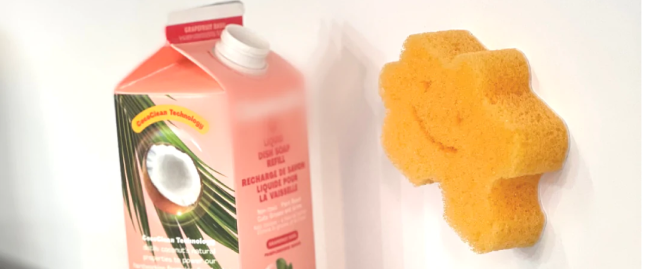If it's written in Korean, it's sold! The 4th Korean Wave by Generation Z Japan

From hotels to household items, ‘Korean style’
Recently, among young Japanese women, 'Korean style interior' is fashionable. It is to decorate the house like the room of the protagonist in a Korean drama or a cafe posted on Instagram by a Korean influencer or idol. It is characterized by using calm tones such as white, beige, and ivory, and arranging fabric accessories such as rugs, cushions, and bedding made of linen, cotton, and rattan. Fabric posters on the wall, various accessories with round silhouettes, low frames without a frame, and dried flowers are also considered Korean-style interior items.
In line with this, Japanese companies are competitively launching Korean-style interior products. Daiso, Japan's leading miscellaneous goods store, operates a separate 'Korean-style interior' corner in its official online store. The famous interior shop Francfranc launched a new ‘Ouchi Cafe’ series this spring and promoted it as “a design reminiscent of a Korean cafe.” Nitori, a furniture conglomerate known as the “Japanese version of IKEA,” is also introducing how to complete Korean-style interiors with its products on its official website and SNS.

n the food industry, competition for Korean food made at home (HMR) is fierce. Frozen kimbap (kinpa), first launched by Japanese household goods brand MUJI, was so popular that it sold out online and offline. It has been three years since its release, but it is still popular, so purchases are limited to one line per person. Following MUJI, Seijoishii, a high-end supermarket chain, Kaldi, an imported food store, and 7-Eleven, a convenience store, also launched gimbap one after another. MUJI also sells HMR such as sundubu stew, yukgaejang, gamjatang, and samgyetang. The product name was also written in Korean pronunciation. This is because this labeling method is more popular with Japanese consumers who want a taste of mainland Korea. At major convenience stores in Japan, such as 7-Eleven and Lawson, you can easily purchase Korean HMR products such as Cheese Chicken Gangjeong, Gomtang, and Kimchi Stew.
The hotel industry is also active in Korean marketing. This is because “Dohannori,” which is played in a hotel or at home while feeling like being in Korea, is popular among Generation Z after the pandemic has made it impossible to travel to Korea. Tokyu Hotel is selling the ‘Docance Plan’ package from last March to the end of this month. Docance is a combination of ‘dohannori’ and ‘hocance (a vacation enjoyed at a hotel)’. You can enjoy Korean food such as kimbap, pancakes, samgyeopsal, and kimchi in a Korean-style pajamas in a hotel room decorated with Korean interiors. Inside the hotel, a space that mimics a Korean convenience store is set up to sell Korean sweets, cup noodles, and drinks, and Korean school uniforms can be borrowed for free. Tokyu Hotel said, “Initially, reservations were made mainly by teenagers and 20s, but now it is gaining popularity among women in their 30s and 40s.”

Korean companies emphasizing 'Koreanness'
Korean companies are also concentrating on local marketing emphasizing ‘Koreanness’. In particular, focusing on the popular culture of using Korean in daily conversations around Generation Z, Korean is actively used in advertisements and videos. In the Shin Ramyun TV commercial that Nongshim aired last year, there was a scene in which actress Marie Itoyo exclaimed, "It's really delicious." In the raccoon commercial, which started airing this year, a CM song with the repeated lyrics of ‘cheeky’ was used. In a recent Duolingo Japan survey, 46.7% of Japanese Generation Z responded that “in their daily life, they or people around them use Korean phrases or words such as ‘real (chincha)’ and ‘oppa’.
In the TV commercial 'Dear Chamisul' series made by Hite Jinro as a parody of a Korean romance drama, Japanese actors reenact scenes that appear frequently in Korean dramas using Korean lines such as “Here, please Chamisul”. These ads have been viewed more than 5 million times on YouTube. It is aimed at young Japanese people who are curious about soju, which appears frequently in Korean dramas. Last year, Hite Jinro exported 28.5 billion won worth of soju to Japan, up 27% from the previous year (22.4 billion won). Sales in Japan, which had been sluggish for a long time due to worsening relations between Korea and Japan, turned to an upward trend from 2020, and have grown by more than 20% for two consecutive years. An official from Hite Jinro said, “Korean soju is gaining a lot of popularity mainly among young people in Japan.
More Korean Innovation News

A Korean Marriage Story

Jwipo, Your New Jerky Obsession

Try these old-fashioned Korean snacks this Lunar New Year

Korean Sci-fi film ‘Jung_E’ tops Netflix charts

To Binge or not to Binge?

Revenge: K-drama exposes school violence

Woodstock to spread peace and love in Korea

The Little Cellist: 11-year-old prodigy takes First Prize


